8 amazing facts about the ocelot - the mysterious jungle cat (9 photos)
The ocelot (Leopardus pardalis) is a wild cat native to Central and South America and parts of the southwestern United States. Often confused with the jaguar or leopard, the ocelot is much smaller, although still twice as large as a typical domestic cat. 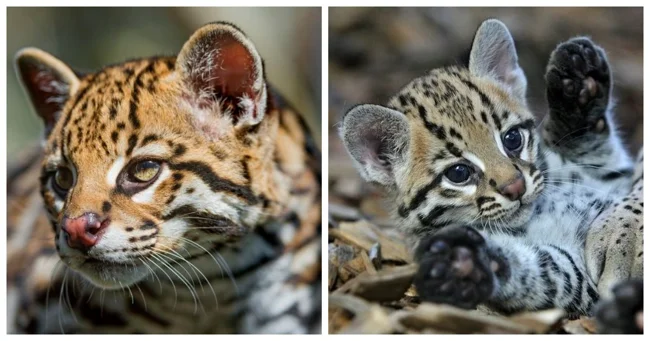
Sometimes called dwarf leopards due to their distinctive spotted coat, they prefer dense forests and thickets where they can hide among trees and bushes. Ocelots are predators, their diet consists of small mammals, rodents and birds, although they sometimes catch fish, lizards and even monkeys. These cats lead a solitary life, jealously guard their territory and only come together with their relatives during the mating season. In the wild, ocelots live 7-10 years. But this is just the basics. Here are 8 fascinating facts about the life of these creatures that will reveal the ocelot from a new side.
1. Ocelots are children of the tropics 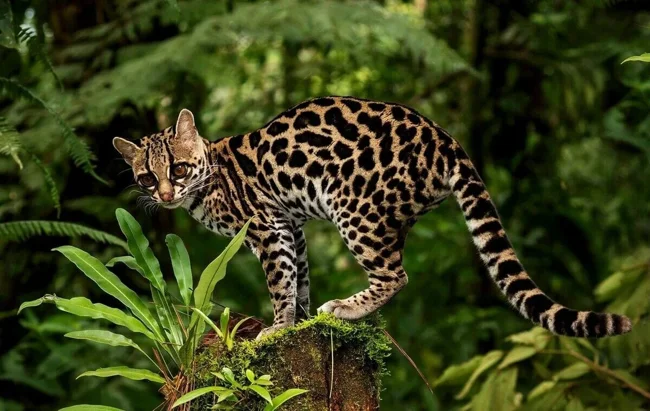
Although they are occasionally found in Texas and Arkansas, the real home of ocelots is the rainforests of Central and South America. The dense tree canopy and humid climate are ideal for their secretive lifestyle. They hunt at night, covering up to 3 kilometers in search of prey. Despite the abundance of predators and heavy rains, ocelots feel great in these conditions.
2. They were deified by ancient civilizations 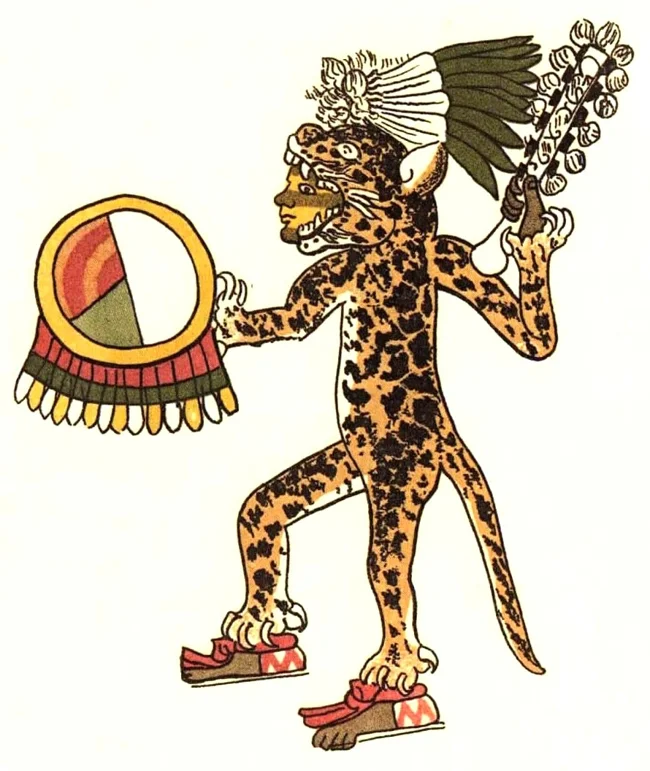
Ancient Peruvians, especially the Moche people, depicted ocelots on metal jewelry and wall paintings. These cats occupied a special place in their religion along with jaguars, snakes and birds. One of the Moche deities was half-man, half-jaguar.
3. Each ocelot has a unique pattern 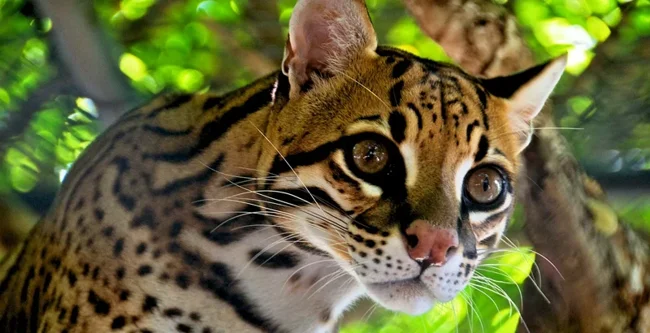
It's like human fingerprints: no two ocelots have the same spots. Their skin is covered with rosettes (spots with a dark border), and the background color varies from golden brown to light yellow. Cubs are born with blue eyes and grayish fur, but with age their color becomes brighter. Unfortunately, it is precisely because of their beautiful skin that ocelots have long been a target for poachers, which has led to a decrease in their numbers.
4. They are very picky eaters 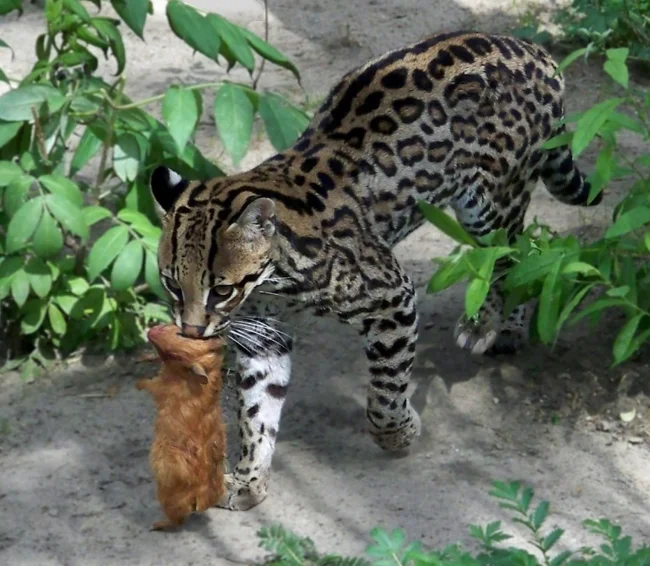
Ocelots are perfectionists in hunting. They carefully clean their prey from fur and feathers, and their rough tongue allows them to gnaw the bones clean. If they do not finish eating, they hide the remains in the leaves or drag them up a tree so that other predators do not steal the "semi-finished product".
5. Their name comes from the Aztec language 
The word "ocelot" comes from the Aztec "tlalocelot" - "field tiger". The Indians revered these cats for their agility and grace, and their images are found in myths, jewelry and ceramics of pre-Columbian civilizations.
6. Night ghosts of the jungle 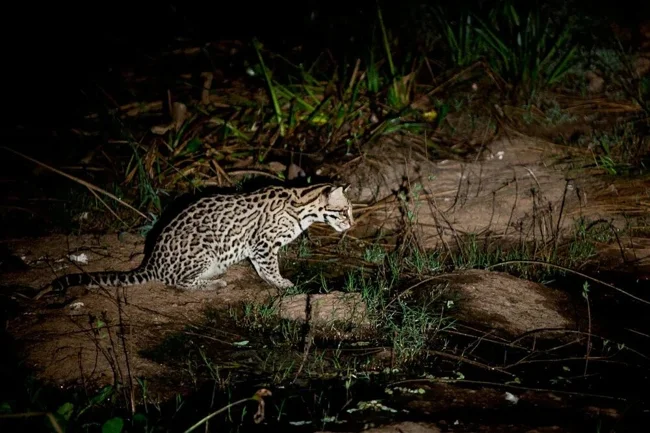
Ocelots hunt only at night, and during the day they sleep in dense thickets or on tree branches. They have excellent vision and hearing, but their main tool is their sense of smell: they follow scent marks left by other animals.
7. Solitary Females 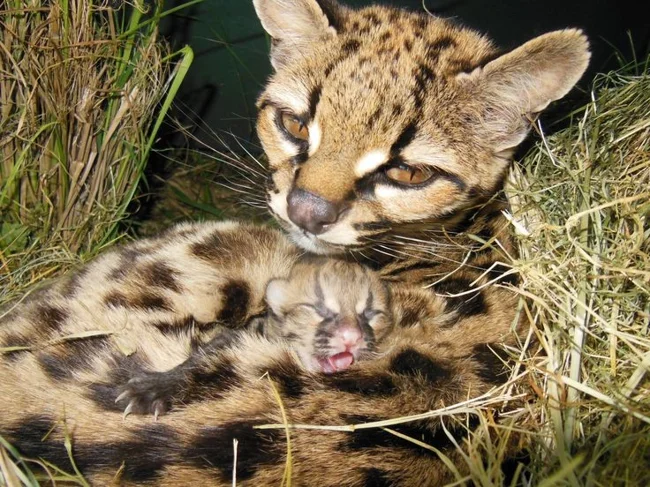
Female ocelots live alone all the time, except for the mating season. After mating, the male leaves, and the queen carries the kittens for two months, then raises them alone. The cubs are born with teeth, but blind, and their eyes open only after a few weeks. They stay with their mother for up to two years, and until they leave, she is not at risk of becoming pregnant again.
8. They communicate with sounds, gestures and... smells 
Ocelots do not roar like lions, but they can meow, purr and make threatening sounds. During the mating season, males use a whole repertoire of cries and roars to attract a female. Each sound and gesture is a message: from "move away" to "let's get to know each other better."





















